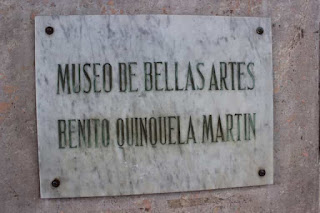We got up early enough to watch the sun rise from the ferry from Bainbridge Island to downtown Seattle.
SeaTac has a program where you can reserve a time to go through security. Last time we did that, there was no one in line anyway. This time there were more people, but not too crowded, but our line sent us directly to the front.
We are spending the night with friends just south of San Francisco - good friends that go back to when some students from my public administration class in Hong Kong went on a study tour with me to Beijing. It was May 1990 - a year after Tiananmen. We went in May so that we wouldn't be there on the one year anniversary. Even so, one of my students couldn't go because his parents were worried about what might happen to him. D is now a professor of marketing and dean of his department here in the South Bay.
 This tree was across the street from the community center where his son was taking a video class. We'll go into San Francisco tomorrow and stay with an old Peace Corps Thailand friend. The impetus of the trip was visiting our grandkids, the youngest one turned five yesterday and got her first COVID vaccination.
This tree was across the street from the community center where his son was taking a video class. We'll go into San Francisco tomorrow and stay with an old Peace Corps Thailand friend. The impetus of the trip was visiting our grandkids, the youngest one turned five yesterday and got her first COVID vaccination.
Meanwhile I'm working my way through the 171 page ruling Judge Matthews wrote on the Redistricting Board trial.
Near the end of the trial, the Board's attorney was giving his closing argument. I raised some issues I had with what he said and in other appearances earlier in the trial. In his closing, after about five or ten minutes he said something like, "Well that's pretty much what I wanted to say, but I'm a lawyer, so I'll keep on talking." As I listened I thought about the old saying - "Better to say nothing and be thought a fool than to speak and prove it." Singer isn't a fool, but he just kept talking and I thought he was being pretty loose and that he wasn't doing himself any good.
The judge wasn't amused. I'd like to give you specific quotes, but the PDF isn't searchable, and while someone told me there are tools to make it searchable, I haven't found them.
Singer did tell the Redistricting Board, at their meeting yesterday (Wed) that the judge had "made new law" and that was the reason that the Board needed to appeal, to make sure the Supreme Court could rule on this "new law."
One of my goals in reading the case is to find what Snger calls 'new law." Here's my list of possibilities so far:
The Proclamation Plan offered 30 days after the Census data arrive should include Senate pairings as well as house pairings. (I missed the part where the Board claimed they had Senate districts because the third party plans had them. In any case, the Board didn’t know the third party plans would have Senate pairings when they adopted their Proclamation Plan
- Importance of public voices - Board members don’t have “discretion to make decisions based on personal preference when that preference is directly contrary to the overwhelming majority of public testimony” “Board must make a good-faith effort to incorporate the clear weight of public testimony.” Need to take “a hard look and [make] a good faith effort to incorporate public testimony into its decisions.”
- Need to have senate pairings in the proposed plan in 30 days
I'm not sure that the Judge made 'new law' as much as enforced the Constitution here. The Constition requires the Board to take their proposed redistricting plan to the public to get comments for six weeks. The Board flew all over the state for twenty some odd meetings.
If the Board doesn't take their comments seriously, what is the point of gathering their opinion? I don't think this is new law, so much as it's law that hasn't actually been tested in court and Matthews is saying that requiring public testimony means the Board must pay attention to the public testimony it gets.
On the other point he's also clarifying that when the Constitution tells the Board to make a draft plan, it includes Senate pairings as well as the house districts. Why does the judge think this? Because the constitution doesn't mention either House districts or Senate districts when it talks about the draft plan. But when it talks about the final play, it includes both.
And, if the public is going to meaningfully testify on the Senate pairings, they have to see them.
I'm tired. It's getting late. And all this is initial thinking about what I'm reading. Below is the Table of Contents of the Judge's decision. There's time to read it fully.
 |
| Our friends have an old cat |
I. Introduction
II. History of Legislative Reapportionment
III. HISTORY OF THE BOARD'S WORK
A. Make up of the Board
B. Board Meetings
[In history of Board Meetings, doesn't mention the public outcry over v1 SE maps plucking incumbents out of their districts
p.14 Sept 20 Meeting "It was at this meeting that the Board contends it adopted proposed senate pairings through the AFFER proposed plan.122
IV. Legal Proceedings
A. Parties in the Case
B. Pre-Trial Proceedings
C. The Record Before the Court
D. Trial Proceedings
V. JURISDICTION AND STANDARD OF REVIEW
VI. APPLICABLE LAW
A. District Boundaries (Alaska Const. art. VI §6)
B. Public Hearings Requirement (Alaska Const. art. VI, § 10)
C. Equal Protection (Alaska Const. art.I § 1; U.S. Const. amend.14)
D. Due Process (Alaska Const. art. I, § 7)
E. The Hickel Process
F. Voting Rights Act
G. Open Meetings Act (AS 44.62.310-19)
VII. PRACTICAL LIMITATIONS
VIII. THE EAST ANCHORAGE CHALLENGES - Senate District K
A. Article VI Section 6
B. Article VI Section 10 - East Anchorage
C. Equal Protection
IX. THE HOUSE DISTRICT CHALLENGES
A. Mat-Su and Valdez Districts 20, 30 and 36
B. Calista Redistricting Challenge
C. Skagway's Redistricting Challenge
X. HICKEL PROCESS
XI. PROCEDURAL CHALLENGES - Due Process and Article VI, Section 10
A. Applicable Legal Standard
B. This court looks to the debates from the Alaska Constitutional Convention to ascertain the goals of redistricting
C. Legislative history from 1998 amendments likewise informs this Court's view of the Board's intended role and the purpose of public hearings
D. Federal case law applying the Administrative Procedure Act to formal agency rule making is instructive on the question of what it means for an agency to take a "hard look" when public hearings are required
E. Precedent, reason and policy considerations for interpreting "reasonableness" in light of the Article VI, Section 10 "public hearings" requirement and other changes from the 1998 amendments
F. Regional Applications
G. Constitutional Deadlines in Article VI, Section 10
H. Other Due Process Issues
XII. OPEN MEETINGS ACT
A. The Open Meetings Act
B. The Redistricting Board's use of Executive Sessions
C. Vague Motions Relating to Executive Sessions
D. Due Process/OMA Challenge by East Anchorage
E. Open Meetings and Attorney-Client Privilege
XIII. SUMMARY AND CONCLUSIONS





















































